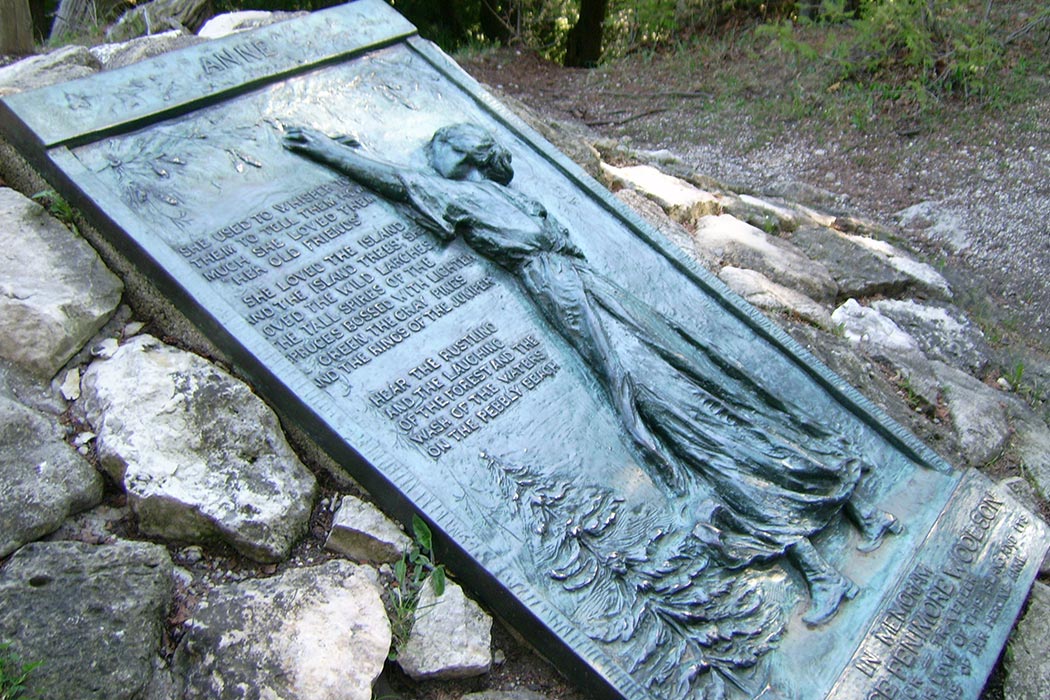Constance Fenimore Woolson was an American Realist writer of renown in the 1870s-1890s, when she was one of the few women considered to be peers with their male counterparts. Woolson published five novels and dozens of short stories before her death in 1894 at age 54. But what she is best known for is her friendship with Henry James, whose literary fame has proved more enduring, and whose dramatic reaction to her death–drowning all her dresses in the Grand Canal–is the only thing most people know about her. The title of Anne Boyd Rioux’s comprehensive new biography of Woolson, Portrait of a Lady Novelist, nods to this relationship.
Rioux has also edited a collection of Woolson’s short fiction, Miss Grief. The two books are meant to elevate Woolson from her place as a footnote in history, and, indeed, people are talking about her. Interestingly enough, some of the conversation remains whether or not we ought to pay much attention to her at all: “Coming across [certain passages] you start to understand why Woolson’s advocates stake their arguments on her personality and independence more often than on excerpts from her prose,” writes one critic, who wonders whether Woolson’s fiction lived up to her own high standards.
Woolson’s work is very much a product of her time. Her poorly-funded nomadic existence (including her years as a European ex-pat with James and company) may have been difficult, but made for vibrant writing about place. Her characters tend to be explorers venturing into uncharted territories. She strove to write in a style that was “ugly and bitter, provided it was also strong,” as she wrote in an 1875 letter. Neill Matheson describes Woolson’s fiction, and especially her short story “Felipa,” as representative of the time. He also notes that she was groundbreaking, perhaps even shocking, in the way she wrote about love and sexuality.
As Matheson puts it, “scholars have noted her ambivalent representation of heterosexual love and her recurrent interest in figures of social marginality and isolation: ‘spinsters,’ foundlings, outcasts [… ] Her story ‘Felipa’ has been read as an important early expression of emergent ideas of sexual inversion.” In this story set in Florida, a native adolescent girl runs wild dressed in boys’ clothes and falls in love with a visiting couple, one of whom is a painter who tries to make a portrait of the child. Felipa witnesses the couple consummating their (heterosexual) love, and is so traumatized that she attempts suicide by eating the painter’s paint. Here is the work of a writer in control, using symbolism and refraction in ways that reveal a sophisticated mastery of the tools of her trade.
Matheson points out that not only is this a complex tale of non-heteronormative love, it is in dialogue with the era’s trends of comparative anthropology:
The story’s complex engagement with these broader cultural discourses becomes fully apparent only through close attention to the specific details and nuances of its language. ‘Felipa’ offers a subtle but relatively expansive literary exploration of the intersection between ethnography and nonnormative sexuality.
Meanwhile, Henry James, to whom Woolson’s writing is so often unfavorably compared, created characters like Isabel Archer, an independent-minded woman who was eventually punished for trying to elude patriarchal society.
We often find comfort in the belief that great writers don’t get forgotten, that the gold sifts up to the top, and that the overlooked scribblers were never scribbling much of import anyway. But in reexamining the complexities of Woolson’s life and work, we have to allow for that uncomfortable idea that circumstances–her childhood beset by tragedy, her serious struggles with depression, her lack of a home and financial support, her urge to write about uncomfortable, complex subjects, and probably, her being a woman–may have been what kept her from joining her friend Henry James in the American literary canon.







